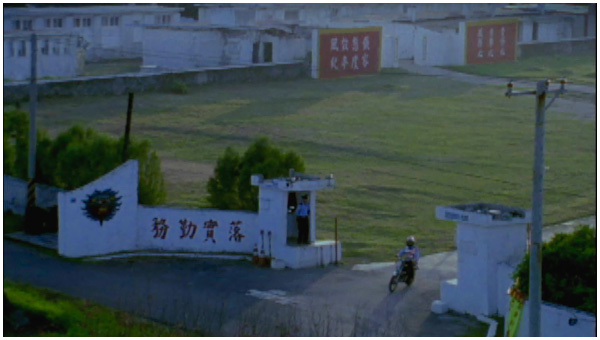| 〈例外之地:台灣海峽之澎湖越南難民營〉是一個長達二十年,目前仍持續拍攝與追尋線索的紀錄片計畫。此次在展覽中呈現的〈例外之地〉是這個未完成的檔案型紀錄片的節錄片段。紀錄片的拍攝位在台灣海峽的澎湖白沙鄉講美村的越南難民營,此一「離島之離島」的「例外之地」,不為大眾所知。1975年西貢淪陷,越南統一,經濟破敗和政治迫害導致許多越南人出逃,其中大部分的人乘船出海漂流,因而有「船民」的稱呼。1977-1988年間,澎湖越南難民營曾經收容過46艘難民船、超過2000名難民。但是它從1980年代中期開始,就被台灣人與世界所完全遺忘,並且在2003年春天完全拆除。劉吉雄的一個夢境讓他趕在拆除之前,使用16厘米mm電影底片前往拍攝,所紀錄之影像是本作品的最原始材料,呈現一段幾乎淹沒的台灣「飄流近代史」。 |
Place of Exception: Penghu Vietnamese Refugee Camp in Taiwan Strait is a 20-year, still on-going documentary project. Place of Exception for this exhibition is the excerpt of an unfinished archive of documentary. It was shot at a Vietnamese accommodation center at Chiang-Mei Village of Paisha Township, Penghu in Taiwan Strait. This “island of island” of “a place of exception” is unknown to the public. After the fall of Saigon and the unified Vietnam in 1975, the battered economy as well as political persecution forced many Vietnamese to fled. Part of them fled by sea, so they were called the “Boat People.” Between 1977 to 1988, the Vietnamese accommodation center in Penghu sheltered 46 refugee boats and over 2,000 refugees. Yet, since mid-1980s, it has been forgotten by Taiwanese and the world, and was utterly demolished in the spring of 2003. A dream of LIU drove him to shoot the film before the demolition. The 16-mm footage is the last record of it as well as the original material for this work, presenting the “drifted modern history” of a Taiwan close to submergence. |

